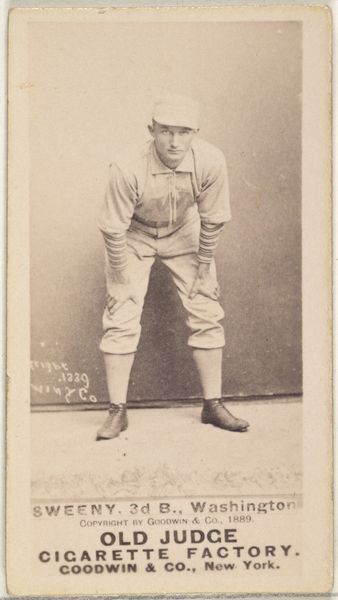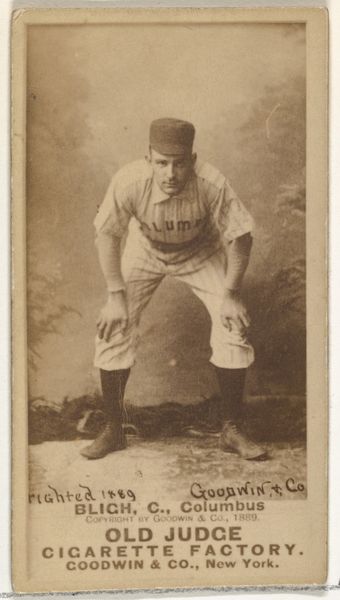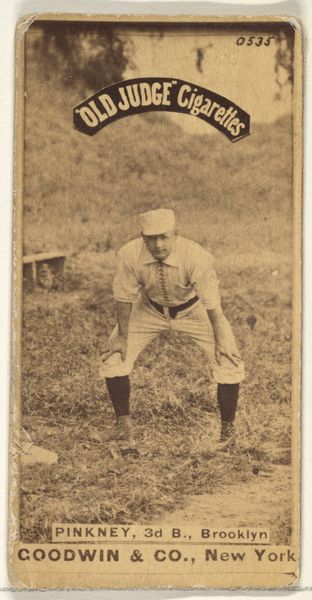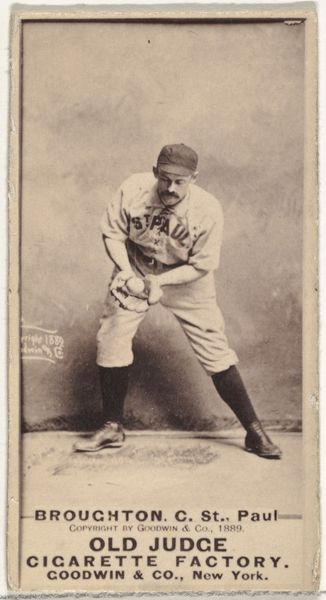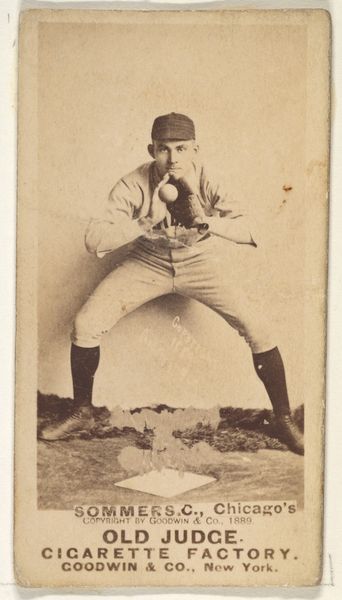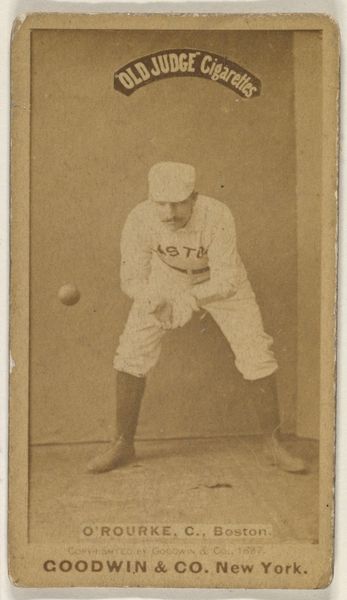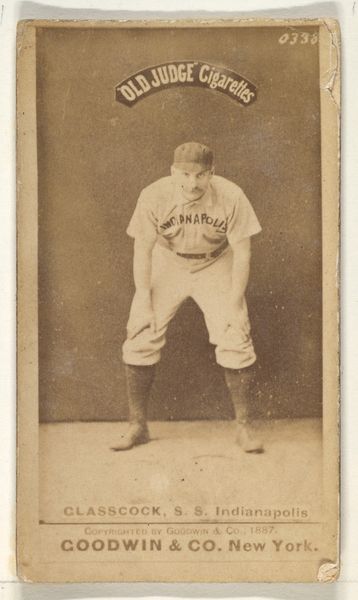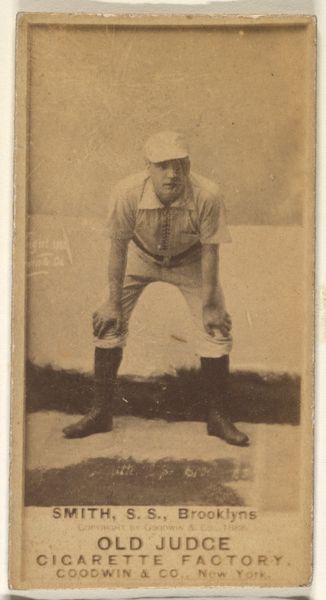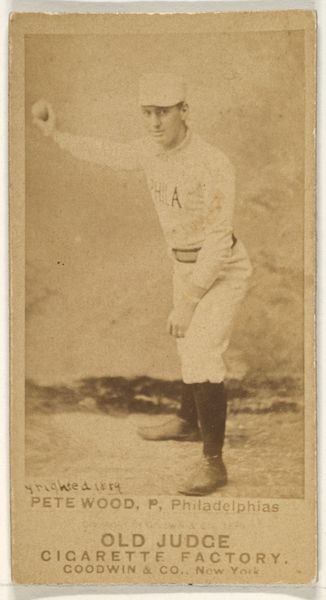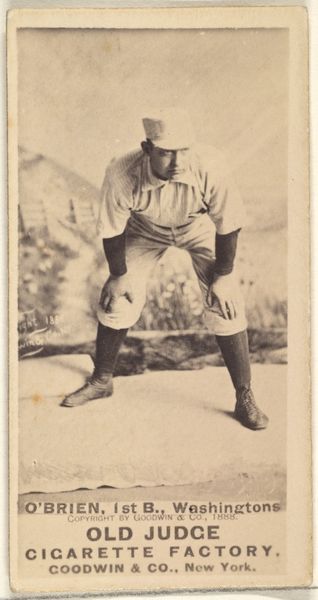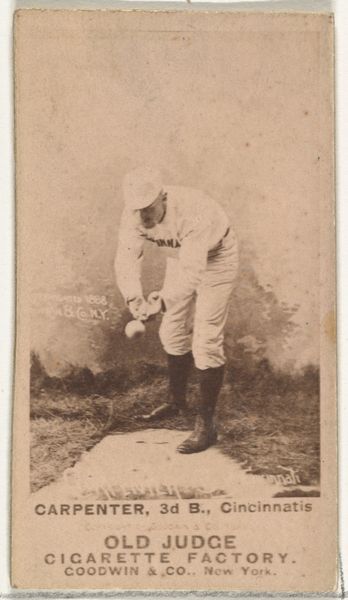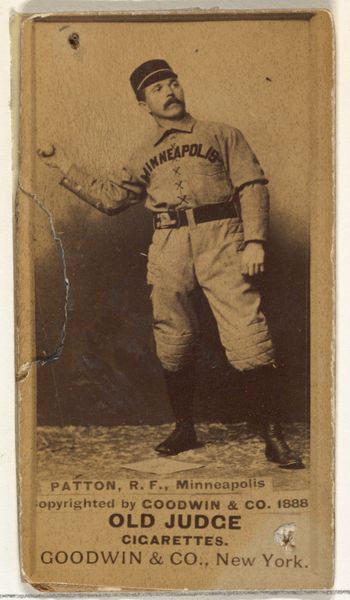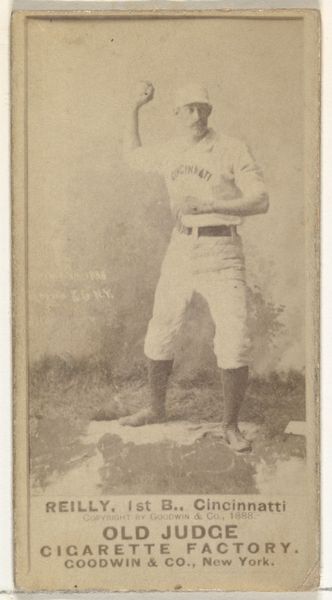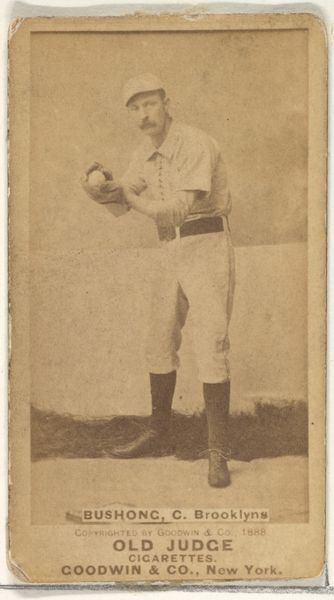
Decker, Catcher, Philadelphia, from the Old Judge series (N172) for Old Judge Cigarettes 1889
0:00
0:00
drawing, print
#
portrait
#
pencil drawn
#
photo of handprinted image
#
drawing
#
toned paper
#
light pencil work
# print
#
pencil sketch
#
baseball
#
charcoal drawing
#
charcoal art
#
pencil drawing
#
men
#
watercolour illustration
#
athlete
#
watercolor
Dimensions: sheet: 2 11/16 x 1 3/8 in. (6.9 x 3.5 cm)
Copyright: Public Domain
Curator: This image presents us with “Decker, Catcher, Philadelphia” from the Old Judge series, created around 1889 by Goodwin & Company. It’s a print, likely after a drawing, used in advertising for Old Judge Cigarettes. What strikes you initially? Editor: A certain melancholic feeling, definitely, emanating from the sepia tones and the very pose itself. The catcher seems poised, but also weary. The print's subdued aesthetic enhances this air of a bygone era. Curator: The sepia tone connects it directly to its origins – the late 19th century. But look at Decker’s uniform, the "PHILA" across his chest. What does that represent, beyond simply the city? It’s more than civic pride, isn't it? Editor: Precisely. The uniform, reproduced and distributed through these cards, performs an interesting function. Mass-produced and marketed with cigarettes, these cards democratized the image of the athlete, embedding baseball within a broader consumer culture. This makes it a political artifact as well as a commercial one, revealing how sport helped create collective identity. Curator: Goodwin & Co. weren’t just selling cigarettes; they were selling a lifestyle, an ideal of American masculinity intertwined with the rising popularity of baseball. What symbols speak to that construction here? Editor: His firm stance, his focused gaze... It's about duty, diligence. Yet there's an undercurrent of vulnerability as he waits, ready but exposed, creating this potent mixture of grit and humility emblematic of early baseball ideals. Curator: And how about the cigarette tie-in? It seems incongruous now, doesn't it? This image intended to encourage athletic prowess associated with something patently unhealthy. Editor: Absolutely. This juxtaposition is rife with meaning, embodying both the allure and anxieties surrounding progress and industrialization during that period. Curator: Ultimately, “Decker, Catcher, Philadelphia” captures a moment when commerce, sport, and identity were being actively shaped in America, wouldn’t you agree? Editor: Indisputably. It presents this fascinating nexus of societal forces. The image speaks of much more than merely baseball. Curator: A poignant relic of the game and an advertisement for an emerging identity, subtly preserved within a tobacco card.
Comments
No comments
Be the first to comment and join the conversation on the ultimate creative platform.
